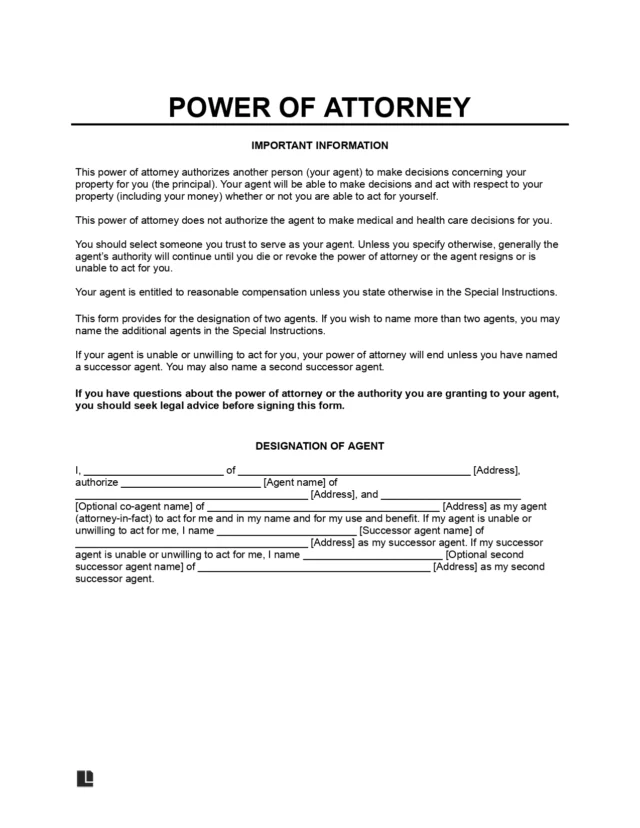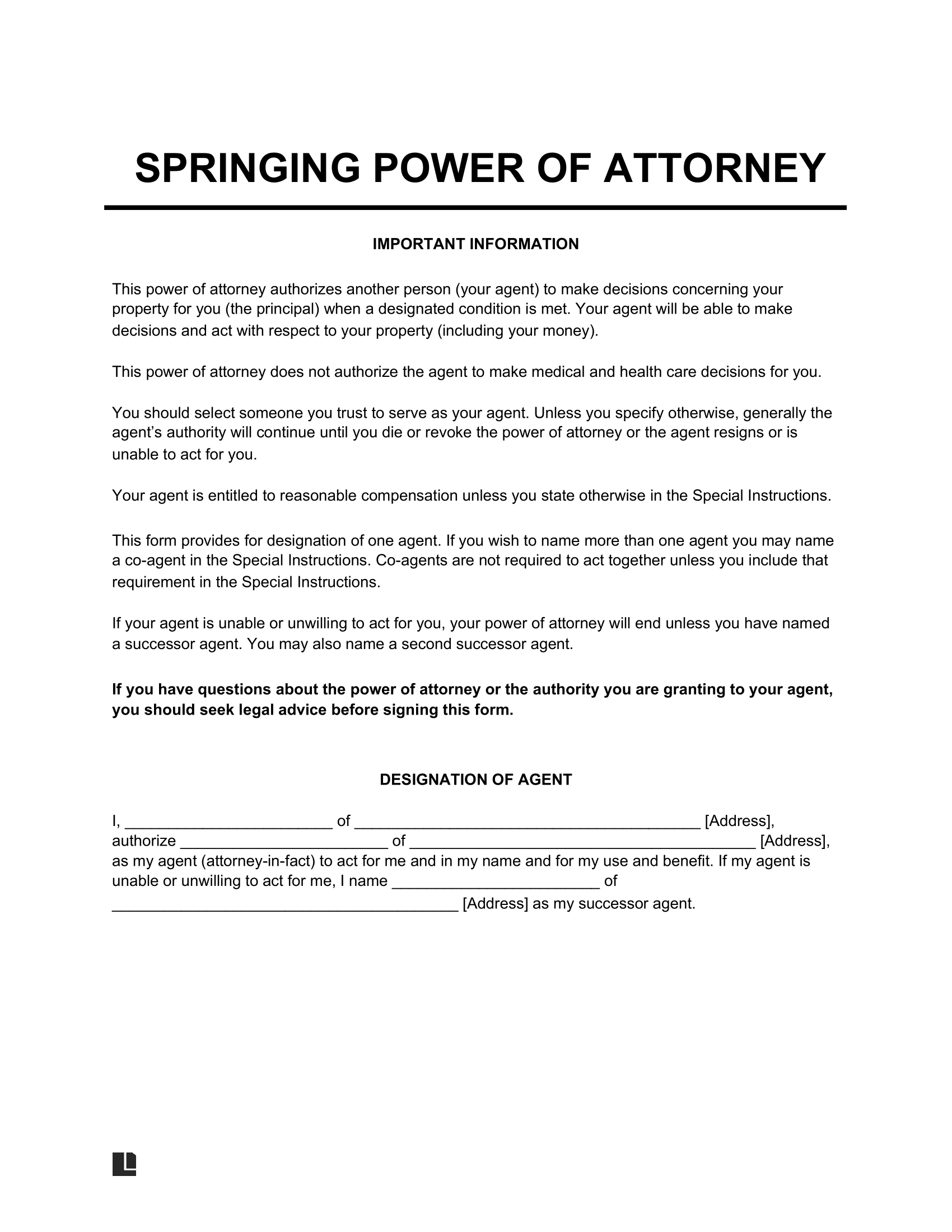What Is a Springing Power of Attorney?
A springing power of attorney (POA), or emergency POA, is a legal document allowing an agent to act on the principal’s behalf after a specific event. Typically, this event is the principal’s incapacity. By creating a springing POA, the principal maintains control for as long as possible.
For a valid POA, the principal must be at least 18 and competent at its creation. You must also write and sign your document before incapacitation occurs if it is to be used in an emergency. You can’t set up a springing POA after the person has already lost the ability to make decisions.
Legal Templates’ free springing power of attorney form helps protect your wishes. Use our forms to choose your agent and set the conditions for their authority’s start date.
Springing vs. Durable Power of Attorney
The main difference between a springing and a durable power of attorney is their timelines. A durable agreement gives the agent authority immediately upon execution of the document. For springing POAs, the agent’s powers don’t begin until the principal’s incapacity or specified event.
In addition, a durable arrangement remains valid until the principal’s death or revocation. A springing POA lasts only during the principal’s incapacity and ends if the principal regains competency.
POA for a Specific Transaction
If you want an agent to act on your behalf for a specific purpose or transaction, consider using a limited power of attorney.
Pros and Cons of a Springing POA
The specific terms and conditions of a springing power of attorney offer benefits and challenges. Consider the pros and cons of this arrangement to determine what works best for you.
Pros of a Springing POA
A springing POA includes extra protections for the principal. The main advantages of a springing POA include the following:
- Controlling agent authority: A springing POA gives you control over the conditions for the agent’s authority. This helps maintain decision-making powers and ensures the agent only acts when necessary upon certain events, such as your incapacitation.
- Helping in emergencies: If you create a springing POA while competent, you can select who will handle your affairs during an emergency. Ensure that the agreement specifies which emergencies trigger the agent’s authority.
- Offering flexibility: The terms of an agent’s authorization change depending on your situation. This flexibility ensures your affairs are handled according to your wishes.
Cons of a Springing POA
Since the springing POA includes extra terms and conditions, it has a few disadvantages. The most common challenges for a springing power of attorney include:
- Delays in effectiveness: In an emergency, the agent may not be able to act immediately. A springing POA often requires a declaration of incapacity, which can take time.
- HIPAA restrictions: HIPAA privacy protections make accessing medical information difficult for an agent. Consider signing medical record release forms or including medical access in the POA’s terms.
- Agent authority is all or nothing: If the terms require incapacitation, it won’t help if the principal has an illness with some good and bad days. It also won’t be effective if a competent principal wants help with their finances while they focus on their health.
How to Write a Springing Power of Attorney
Writing an effective springing power of attorney form ensures you maintain control. It also ensures someone can handle your affairs if you cannot do so. Create a springing POA that works for you and your agent with the following steps:
- Identify the parties involved: Record each party’s full name, address, and contact information. Include the principal, agent, and successor agent.
- Select general authorities: Choose general authorities for your agent to exercise. General powers include handling personal property, bank accounts, medical records, and investments.
- Provide special powers: Authorities for trusts, beneficiaries, and gifts need an explicit statement. Add any of these abilities as you see fit for the agent.
- Add custom instructions: You may also write in custom instructions. Include specific conditions and refer to your living will to communicate your desired care.
- Determine effectiveness: Set the agreement’s effective date. For a springing POA, the agreement becomes effective upon a specific event and ends when the event concludes. Generally, a physician’s declaration of the principal’s incapacitation is the triggering event.
- Review and sign: Once satisfied with the terms of your arrangement, sign and date the document. Also meet any notarization or witness requirements, which vary by state.
Springing Power of Attorney Sample
View the free springing power of attorney sample form below for the proper information and formatting. Legal Templates offers a customizable document that allows you to set the terms that work for you. Create and download your agreement now, available in PDF and Word formats.








